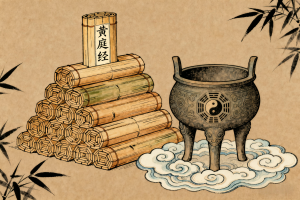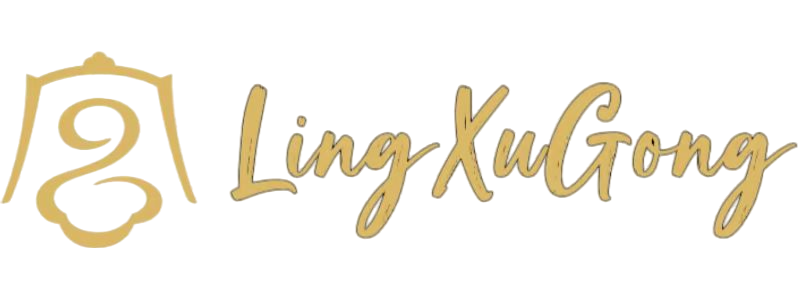
《Huangting Sutra》
Introduction
The Huangting Jing (Huangting Jing) is one of the earliest Taoist classics and a key text of the Shangqing School. It was completed around the Wei and Jin dynasties. The work is divided into three parts: the Huangting Neijing (Huangting Neijing), the Huangting Waijing (Huangting Waijing), and the Huangting Zhongjing (Huangting Zhongjing). (The Zhongjing part may have been supplemented by later generations.) It expounds on Taoist cultivation and health preservation in seven-character rhymed verse.
introduce
Core Content and Concepts:
- Interpretation of “Huangting”:
- “Huang” is the color of the center, symbolizing the Central Earth; “Ting” means courtyard, metaphorically referring to the hollow orifice within the body. Together, they refer to the central hollow area within the human body, namely the Dantian (especially the Tanzhong acupoint). The sutras emphasize the Huangting as the place where essence, energy, and spirit converge, making it the core of cultivation.
- Concentrate on the mind and observe within:
- It advocates contemplating the inner spirits (such as the spirits of the five internal organs) to harmonize qi and blood and strengthen essence. For example, “The heart spirit, Dan Yuan, is called Shou Ling, and the lung spirit, Hao Hua, is called Xu Cheng.” This practice associates the internal organs with the names of spirits, strengthening the foundation of life through visualization of these spirits.
- Accumulate energy:
- It emphasizes “accumulating essence and energy to be the real thing” and believes that essence and energy are the foundation of longevity, which need to be stored through breathing (such as “breathing in the room into the dantian”) and restraining desires (“longevity requires caution in sex”).
- Correspondence between Heaven and Man:
- The human body is corresponded to the universe (such as the five stars corresponding to the five internal organs, and the sun and the moon representing the eyes), reflecting the Taoist view of life that “the human body is a small world.”
Impact and Value:
- Taoist practice classics:It laid the theoretical foundation for inner alchemy in later generations and is hailed as the “wonderful book of longevity and immortality.”
- Medical Reference:It has a profound impact on TCM’s theory of internal organs and health preservation (such as guiding and breathing techniques).
- Cultural significance:Wang Xizhi once wrote “Huangting Waijing Jing” in exchange for a goose (legend has it), which became a famous calligraphy work; scholars such as Ouyang Xiu and Su Shi studied it.
Excerpts from famous chapters:
“Above is the Huangting, below is the Guanyuan, in front is the Youque, and behind is the Mingmen.
Breathing through the hut enters the Dantian, and the clear water of the Jade Pool nourishes the spiritual roots.”
(Huangting Waijing Jing, Chapter 1)
“Immortals and Taoists are not gods, but they accumulate essence and energy to believe they are real.”
(Huangting Neijing Jing, Chapter on Immortals)
Disclaimer: All articles on this site, unless otherwise noted or tagged, are original publications of this site. Any individual or organization is prohibited from copying, misappropriating, collecting, or publishing this content on any website, book, or other media platform without our prior consent. If any content on this site infringes upon the legitimate rights and interests of the original author, please contact us for resolution.


Comments (0)